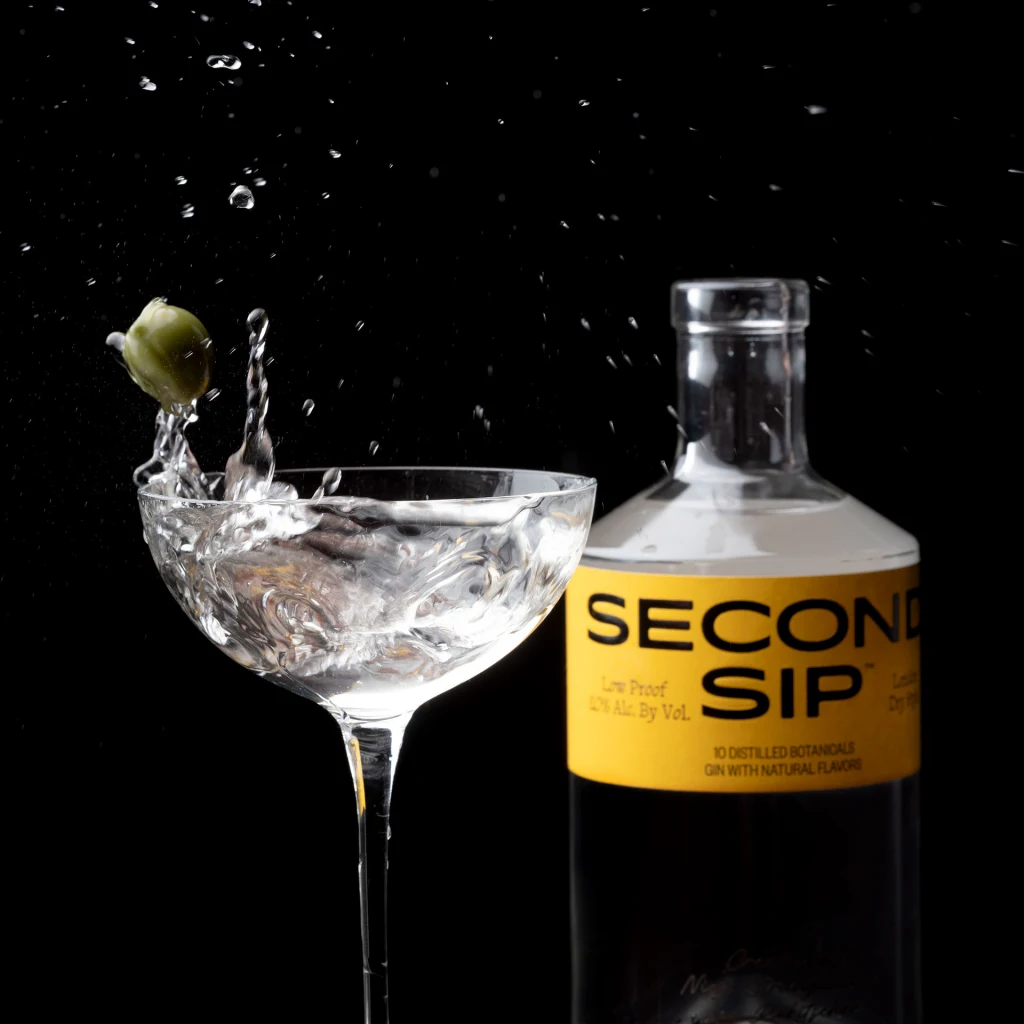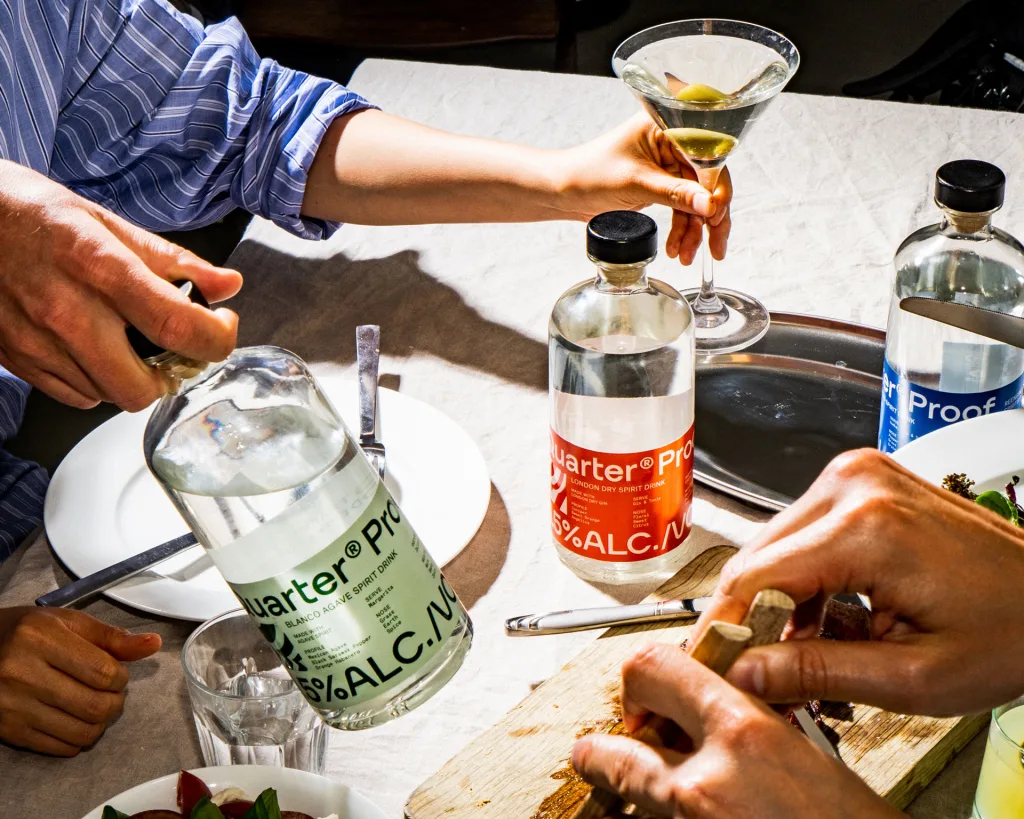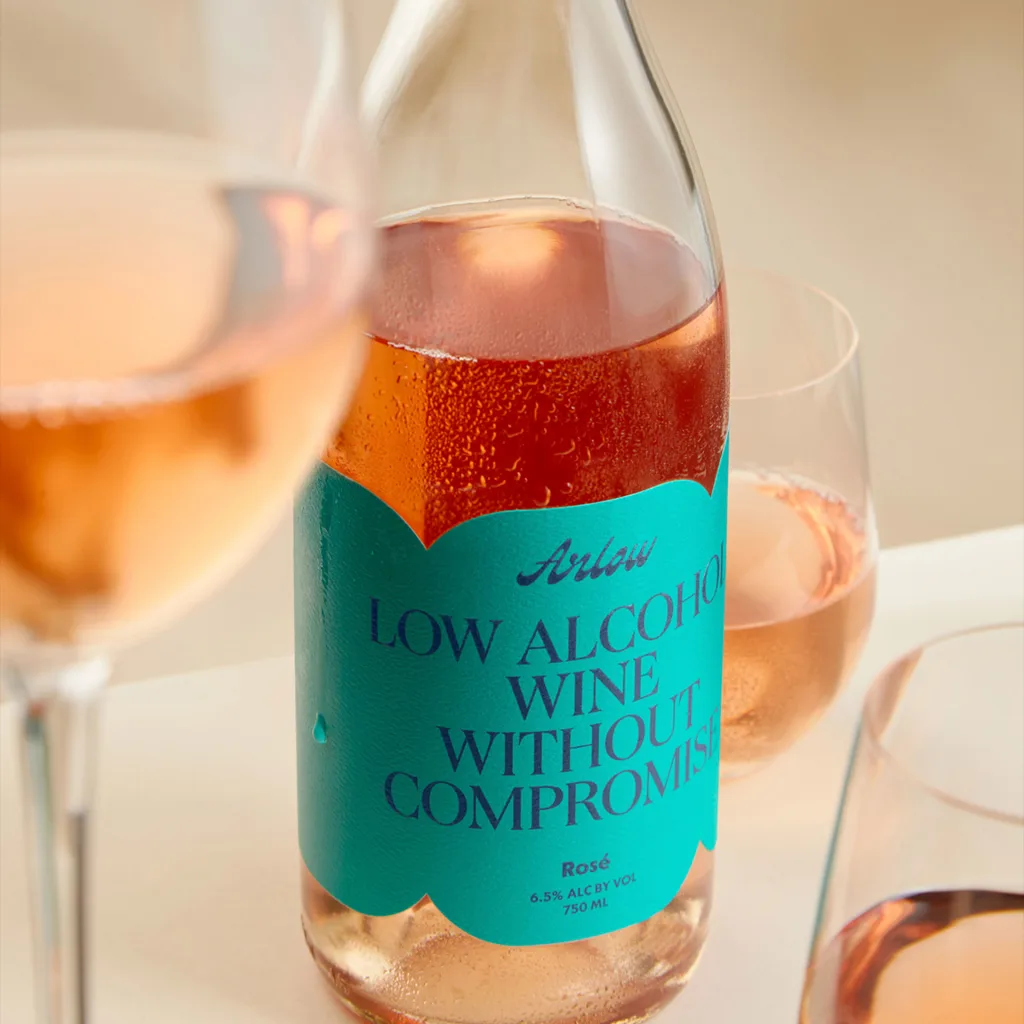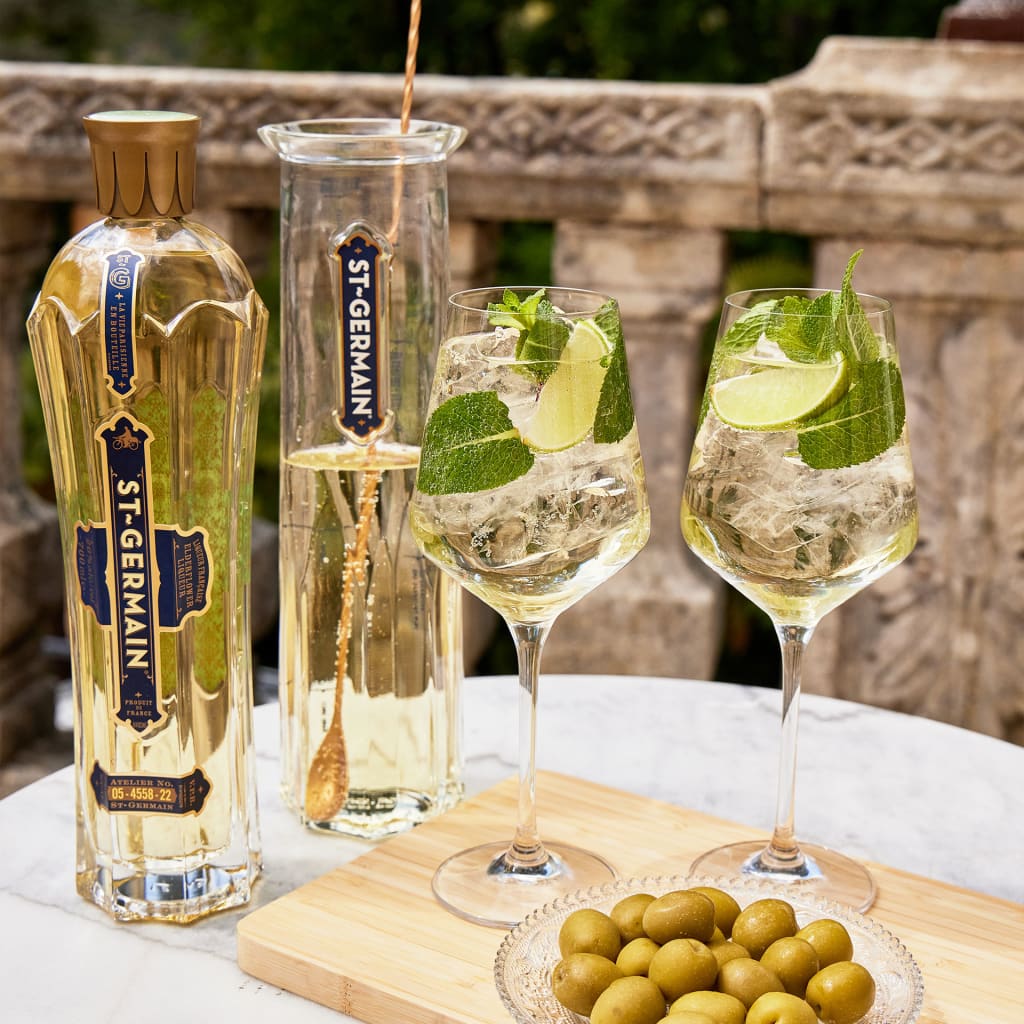Leo Robitschek says he loves gin-based martinis and negronis. Unfortunately, they don’t always love him back.
“After two, that decision to have a third is usually a tricky one,” says Robitschek, who has worked in the liquor industry for more than two decades, including serving as a bar director for Manhattan hot spots Eleven Madison Park and the NoMad Hotel.
To lessen the pain after a boozy night out, Robitschek joined forces with another bartender, Nick Strangeway, and the founder of the sparkling beverage brand Dry Soda, Sharelle Klaus, to launch Second Sip Gin. The London dry gin is 20% alcohol by volume (ABV), roughly half the level of most gins, and was formulated over the course of six months as “somewhere between Beefeater and Tanqueray” gins. Second Sip has a juniper forward flavor, along with angelica root, coriander, bitter orange, and licorice, so it can retain an array of botanicals that gin is known for.

“Two martinis are better than one,” says Robitschek. “But hopefully, there’s no regrets in the morning.”
The rise of mindful drinking
Lockdowns during the COVID-19 pandemic led to a spike in alcohol consumption as Americans were stuck at home with little to do. After life returned to normal, many consumers sought to reset their relationship by participating in Dry January—avoiding booze for the full month—and giving nonalcoholic beverages a try. All this coincided with the rise of Gen Z into legal drinking age, a generation that’s drinking less than other young people before them.
But industry data shows that a vast majority of adults that consume nonalcoholic drinks aren’t exactly sober. More than 90% drink alcohol, too. And often, they will alternate between alcohol and N/A brands within the same evening, a social concept called “zebra striping.”
“That idea of zebra striping and the consumer having two options results in this low alcohol space in the middle,” says Kaleigh Theriault, associate director of beverage alcohol thought leadership at research firm NIQ. “They can trust that the product is going to be moderate for them and they don’t have to be as conscious about making a decision between a non-alc and a regular ABV [alcohol by volume].”
Lower alcohol sales total nearly $3.6 billion annually in U.S. grocery, liquor, convenience, and other retailers tracked by NIQ, but the category is also evolving differently across beer, wine, and spirits. Within beer, there has been less appetite for low-strength alternatives because major brands like Miller Lite and Coors Light are already naturally low in alcoholic content and the N/A brands that have emerged, led by Heineken 0.0 and Athletic Brewing, taste similar to their full-strength cousins.
Redefining the buzz
Fabian Clark says he enjoys N/A beers, but when he worked in hospitality and ran a restaurant in London, he consistently declined to stock Seedlip and other N/A spirits he was pitched. “For me, I felt they didn’t deliver on the flavor that I was looking for,” says Clark.

After his restaurant shut down due to COVID, Clark cofounded Quarter Proof in 2022, launching with a gin and later a tequila and vodka that all contain 15% ABV, a level he says allows the startup to deliver spirits that retain a similar flavor profile to the higher proof competitors. “They’re not looking to abstain, they’re looking to moderate,” Clark says of the shifting consumer mindset. “And we feel that we offer seamless moderation. As we like to say, ‘All of the buzz, none of the blur.’”
Stateside, Quarter Proof is only sold in bars and restaurants in New York and Miami, but Clark is in talks with a national distributor to bring the brand to additional markets. Clark also intends to move to the U.S. before the end of the year to have a more active in-person role building up Quarter Proof.
Brandon Joldersma, the CEO of N/A wine brand Surely, says that the dealcoholization techniques changed the flavor profile too much for some consumers. “You really want to taste as similar as possible,” says Joldersma. “It’s just much more difficult to do with wine than it is for beer.”

With that in mind, he launched the low-alcohol wine brand Arlow last year, with varietals including sauvignon blanc, rosé, and cabernet sauvignon, all with a 6.5% ABV and fewer calories and sugar than the full-strength wines. The brand is sold online in nearly all states and has scored wholesale distribution in New York as a test market.
A category without clear rules
NIQ’s Theriault says there’s no set guidelines for lower proof alcohols and thus the ranges for each category aren’t yet settled. Generally, NIQ’s unofficial definitions settle on beers under 4% ABV, and most wines under 10% and spirits below 30%. This presents both a challenge and an opportunity for upstarts like Arlow and Quarter Proof.
“ABV math is something that consumers don’t necessarily do when at the shelf making a purchase,” says Theriault. “And probably not while ordering a drink while at a bar.”
Beyond explaining the claims about ABV and better-for-you proposition for Arlow, Joldersma says he’s fielded questions like if Arlow adds water to dilute it (they don’t). “This is a brand new category that we are introducing and there’s some education that comes with that,” says Joldersma.
Some say Americans are finally playing catch-up by embracing mid-strength cocktails like the aperol and hugo spritzes. “That lighter daytime drinking moment has always been part of European culture,” says Emma Fox, global VP for St-Germain elderflower liqueur and Martini vermouth.

Fox estimates that globally, the aperitif and N/A-low alcohol segment is worth $11 billion and projected to grow 6% over the next four years. Google Search volume for the hugo spritz, made with St-Germain, prosecco, and mint, spiked by 130% in 2024 from the prior year and saw content on TikTok more than triple.
St-Germain launched a global ad campaign with actress Sophie Turner last year to bolster the hugo spritz during the summer, when the cocktail tends to be more popular. To bolster popularity during the colder months, the French liqueur brand has also developed après-ski pop-ups at ski resorts.
A new standard for bar menus
Proof Creative, which conceptualizes cocktails menus for luxury hotel clients like the Four Seasons and Ritz-Carlton, anticipates menus will soon be engineered to offer N/A, low ABV, and full strength options across every beverage category. Bobby Carey, creative director for bar consultancy Proof Creative, says the lower-proof brands are also emerging in response to some consumer pushback that the N/A brands were being sold at lofty price points on par with the full strength spirits and wines.
“Why am I paying so much for a nonalcoholic drink?,” asks Carey, explaining a common gripe he’s witnessed. “If you can turn around and say, ‘This is still alcohol. It’s still giving you the same flavor.’ That’s a more winning proposition.”
